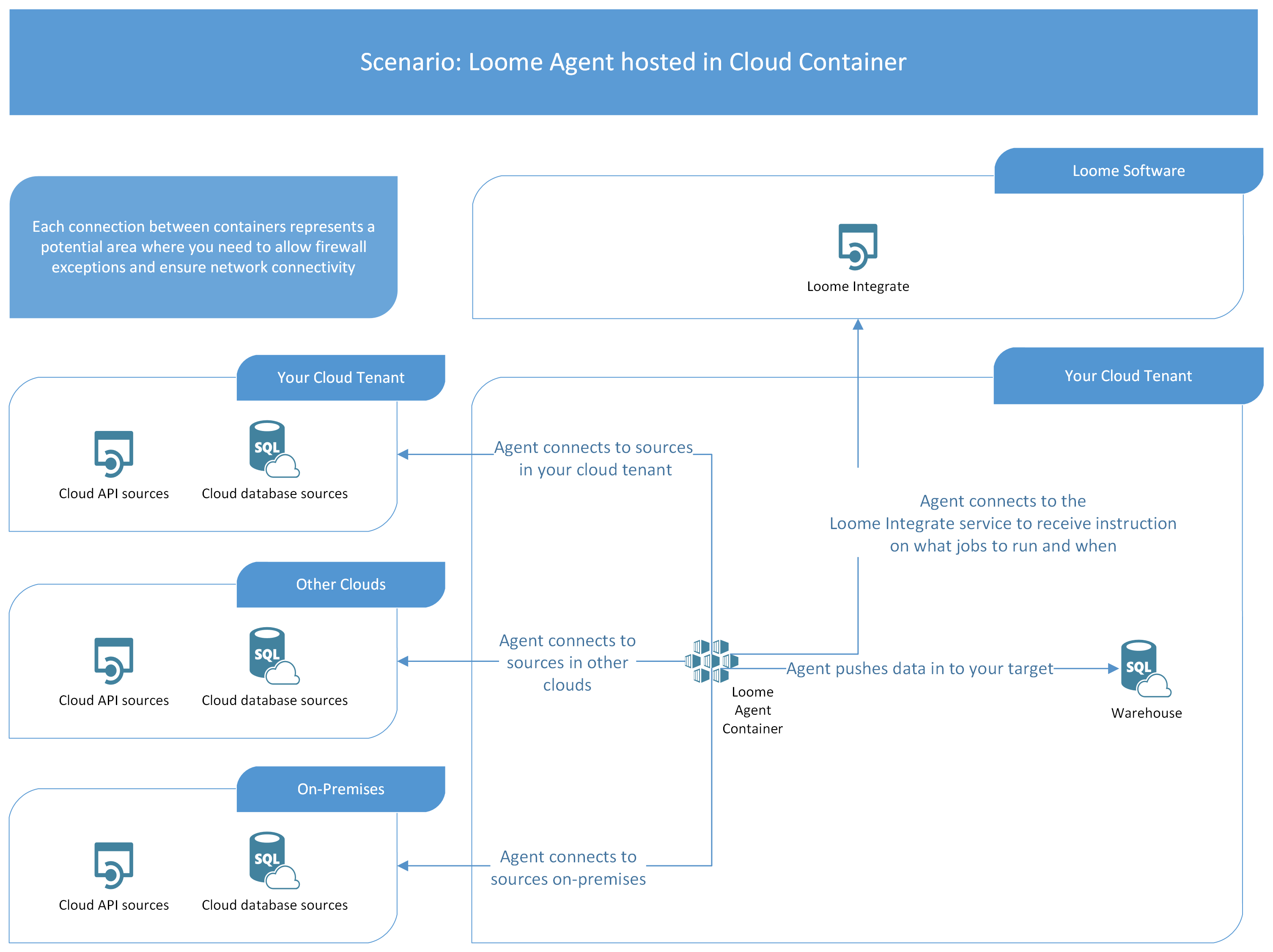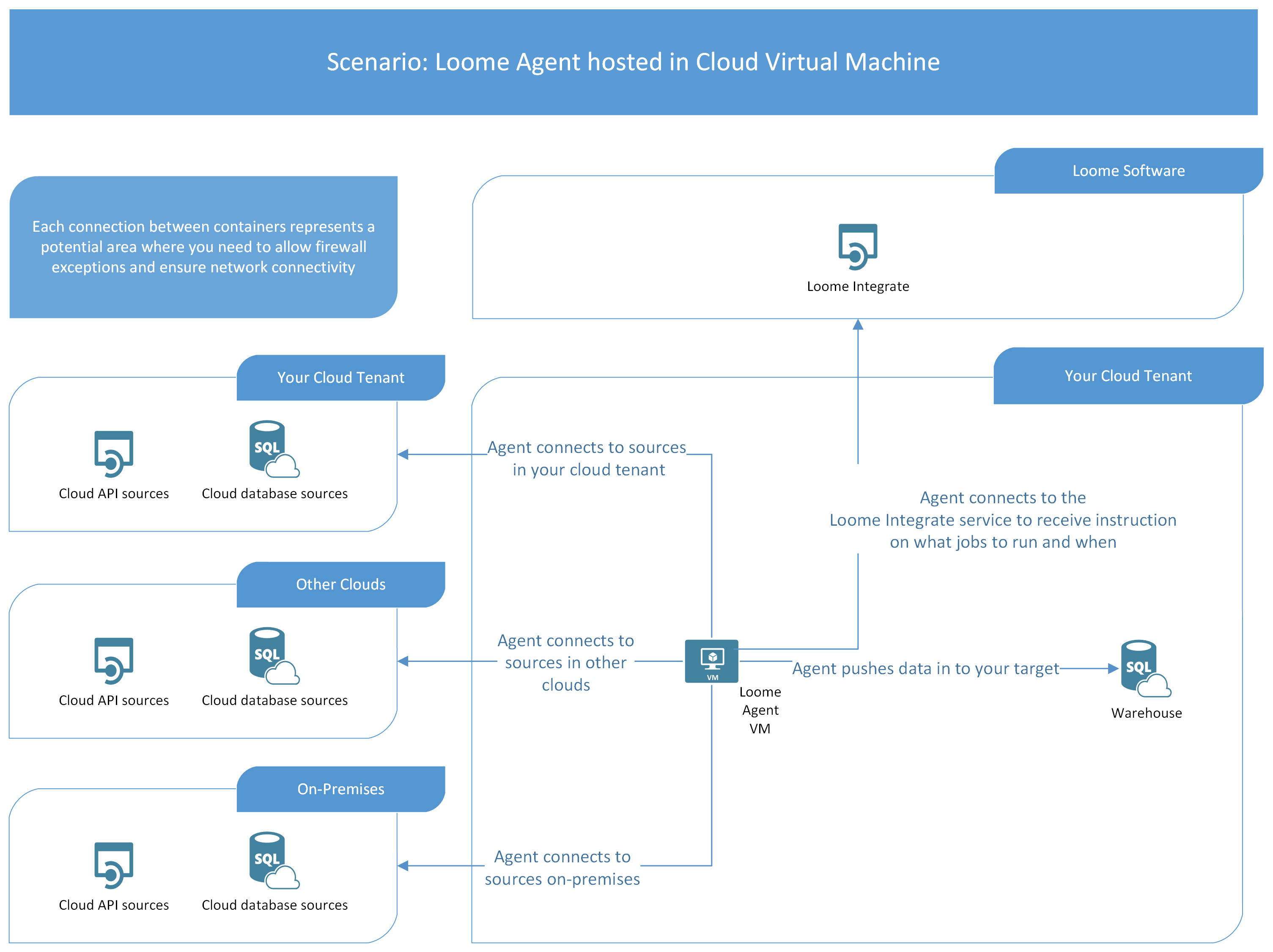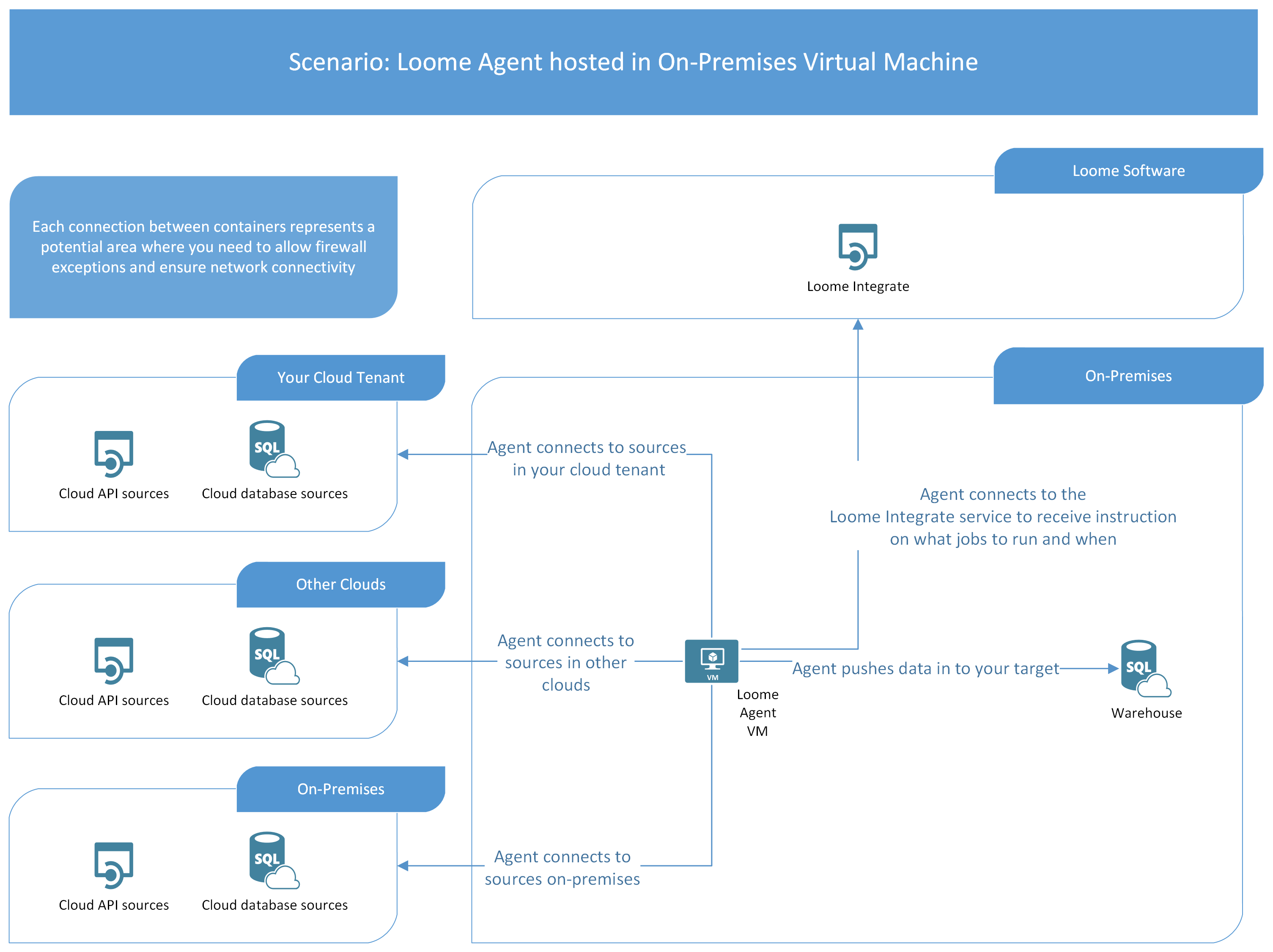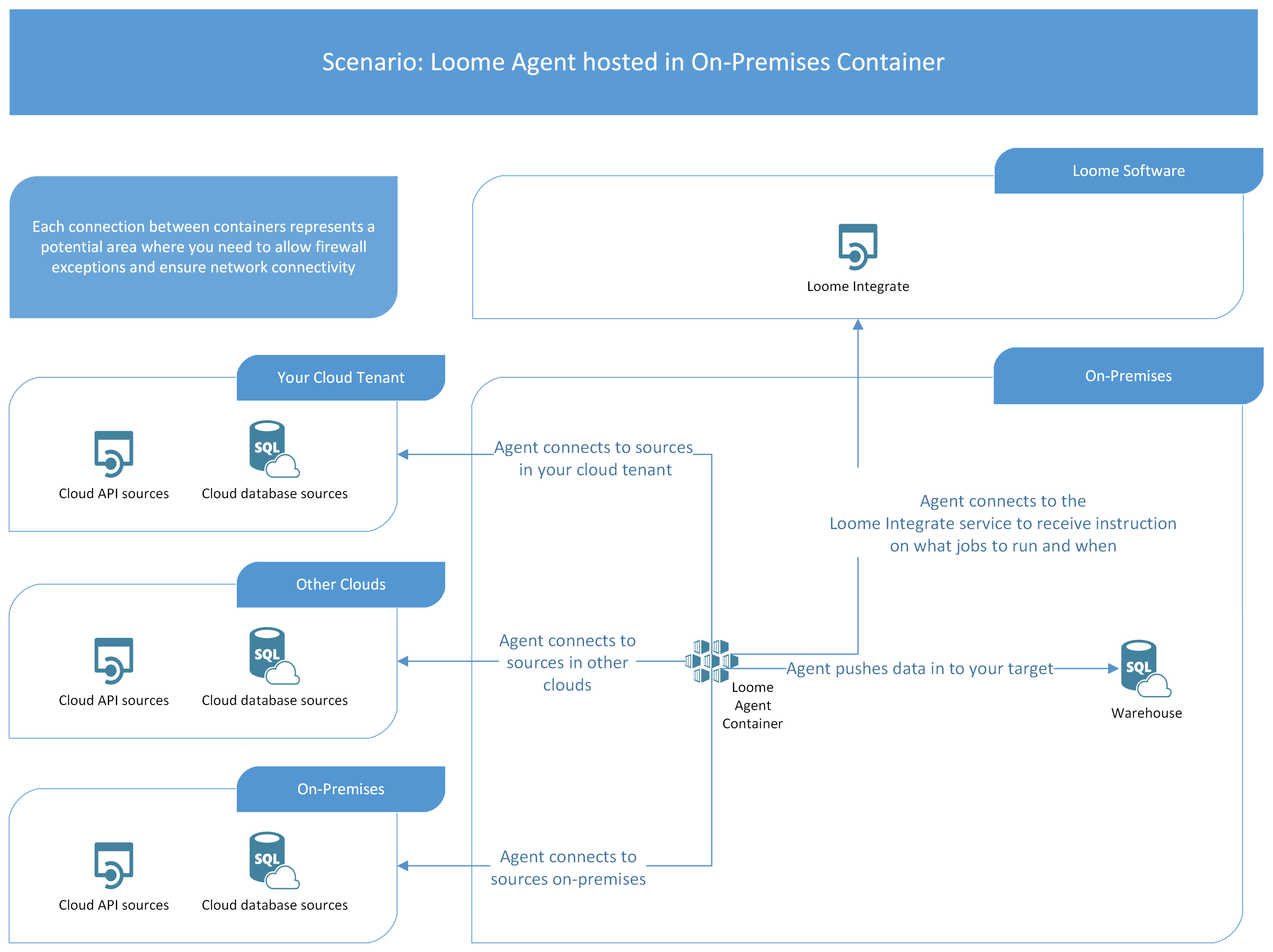Deployment Scenarios
The Loome agent can be deployed in a variety of scenarios, either in a Windows or Linux virtual machine, or on a Docker container service.
The agent can be deployed on-premises, or in the cloud, and this will depend on your available infrastructure and location and availability of your data sources.
Cloud
The Loome Agent can be deployed in to the cloud. In this scenario, the Loome Agent will run in your cloud tenancy, in either a Windows or Linux Virtual Machine, or a docker container.
Once deployed, the agent will connect back to the Loome Integrate service and register itself within your Loome tenant.
Once the agent has registered, you can then begin to assign it to tasks.
The agent will poll the Loome Integrate service looking for jobs to run, either scheduled or run on-demand.
Container
In this scenario, you install the Loome Agent in to a cloud container service in your cloud tenant, such as Azure, Amazon, or Google Cloud using a docker command that points to our Loome Agent docker container on Docker Hub. You can use any service that supports a Docker container.
The container agent is a good choice when you want a highly managed service that can be updated simply by restarting the container. You may want to choose another deployment scenario when you have complex requirements, or hard to reach on-premises resources.

Virtual Machine
In this scenario, you install the Loome Agent in to a cloud virtual machine in your cloud tenant, such as Azure, Amazon, or Google Cloud by first creating the virtual machine and then running our PowerShell script to install the agent. You can use any service that supports either Windows or Linux virtual machines. We recommend Debian or Ubuntu for Linux virtual machines.
The virtual machine agent is a good choice when you have complex requirements, or hard to reach on-premises resources. This model does require you to manually manage agent updates via the PowerShell script.

Sourcing cloud data
When deploying to the cloud, the agent will require access to source data connections that you wish to pull data from. When sourcing data from other cloud services, either within your tenant or from 3rd party cloud services, in most cases you should be able to connect with no additional configuration.
In some circumstances, your own cloud tenant resources such as databases may be tucked away behind firewalls, in this case you will need to consult with your IT administration team to organise firewall/cloud network access to these resources.
Sourcing on-premises data
If you plan to source data from on-premises resources, this will require a virtual private network connection from your cloud tenant to your on-premises environment, usually accompanied by the need to create firewall entries allowing the agent to connect through to the on-premises data.
You may encounter situations where technical limitations of your cloud provider may restrict where and how you can connect your agent to on-premises resources. You should consult with your IT administration team to ensure you can connect your agent through to these resources.
In scenarios where this is not possible, you can deploy an on-premises agent to work side by side with your cloud agent. In this scenario you would configure the data sourcing tasks from on-premises resources to use the on-premises agent, while all other tasks use the cloud agent.
On-Premises
The Loome Agent can be deployed in to your on-premises infrastructure. In this scenario, the Loome Agent will run in your on-premises environment, in either a Windows or Linux Virtual Machine, or a docker container.
Once deployed, the agent will connect back to the Loome Integrate service and register itself within your Loome tenant.
Once the agent has registered, you can then begin to assign it to tasks.
The agent will poll the Loome Integrate service looking for jobs to run, either scheduled or run on-demand.
Virtual Machine
In this scenario, you install the Loome Agent in to a virtual machine in your on-premises infrastructure by first creating the virtual machine and then running our PowerShell script to install the agent. You can use any service that supports either Windows or Linux virtual machines. We recommend Debian or Ubuntu for Linux virtual machines.
The virtual machine agent is a good choice for most on-premises deployments as it can be co-located on existing servers such as your data warehouse. In this scenario, you can usually reach existing data sources without additional configuration as they have been opened up for your warehouse already.

Container
In this scenario, you install the Loome Agent in to a container service in your on-premises environment, such as Kubernetes or Docker Orchestrate, using a docker command that points to our Loome Agent docker container on Docker Hub. You can use any service that supports a Docker container.
The container agent is a good choice when your IT team have an existing and mature container strategy, as it allows for a highly managed on-premises service with updates via container restart.

Sourcing cloud data
In this scenario, the agent will require access to source data connections that you wish to pull data from. When sourcing data from other cloud services, either within your tenant or from 3rd party cloud services, in most cases you should be able to connect with no additional configuration, provided your on-premises environment does not block outbound secure connections.
In some circumstances, you may need to ask for outbound ports to be opened to both the Loome service and to cloud services where your IT team lock down outbound access.
Sourcing on-premises data
In most cases you will not need to open up access to on-premises data, especially when you co-locate your agent on an existing warehouse. You should still check with your IT administration that access is available from the agent virtual machine or container service and ask for appropriate firewall rules to be created where they do not currently exist.